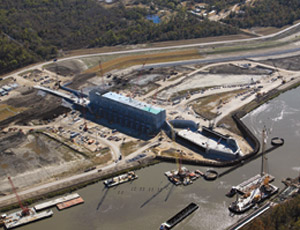
Following Hurricane Katrina’s 2005 attack on New Orleans, the best minds in the international water-resources industry began seeking innovative ways to rebuild the city’s storm-surge defenses.
Key studies were led by the Dutch engineering firm Arcadis, which had signed a $3-million planning contract with the U.S. Army Corps of Engineers three days before the storm. Dennis Kamber, senior vice president and director of water-resources practices for Arcadis-U.S., jumped to the task with his team and helped the Corps end up with a fully funded, $14.6-billion construction program for a 350-mile-long surge risk-reduction system with many enormous features, most of which are to be in place by June 2011.
One of the largest components is a $1-billion facility known as the Gulf Intracoastal Waterway West Closure Complex. The facility includes the largest pump station for interior drainage in the world and the largest sector gate in the country. Kamber led an innovation study to search for ways to deliver that complex quickly and efficiently; he then became the design team project manager, internally coordinating a multi-firm team and externally coordinating with the Corps’ New Orleans and Rock Island districts.
Walter Baumy Jr., engineering division chief at the Corps’ New Orleans District, says Kamber and Arcadis have been key partners in executing the project. Baumy says Kamber’s team plays an essential role delivering the massive, complex project and expresses “high confidence” in its ability to deliver critical components under the fast-tracked project. With its use of early contractor involvement, it is expected to be a model for flood risk-reduction project delivery.

Post a comment to this article
Report Abusive Comment